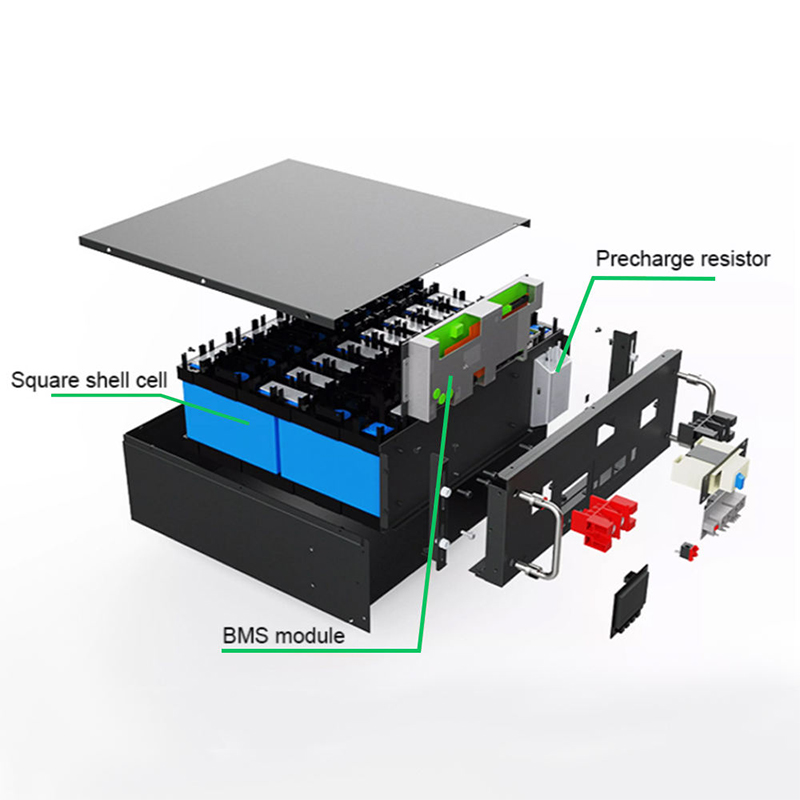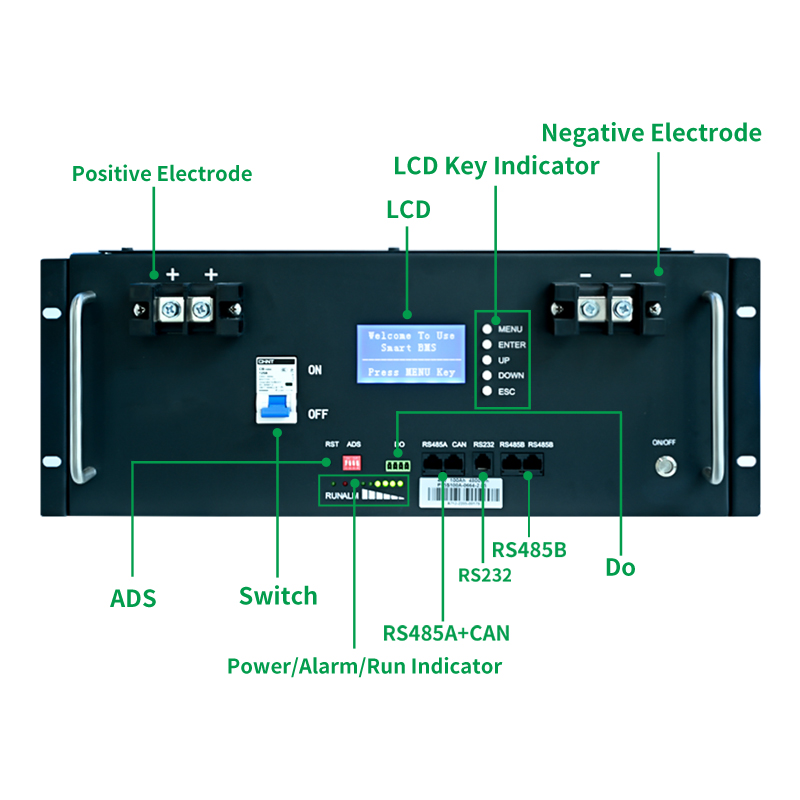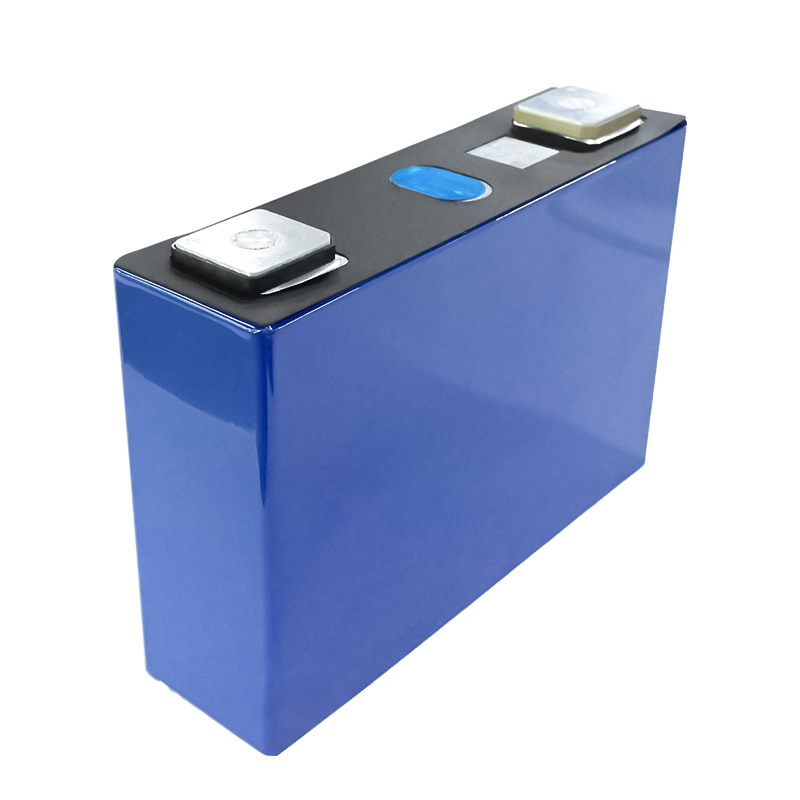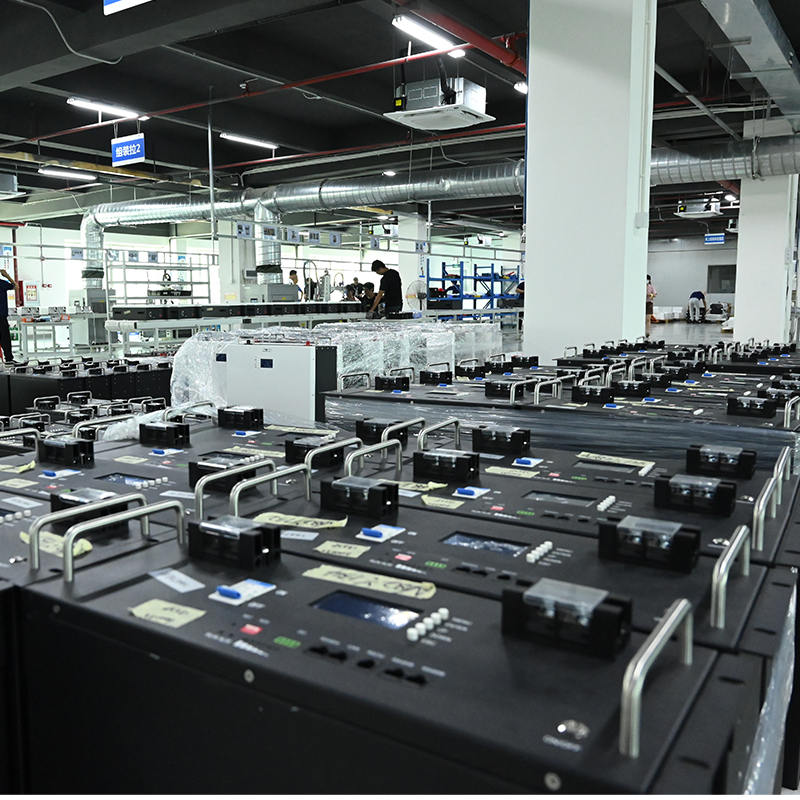SunArk 48V lithium-ion battery is a type of rechargeable battery that operates at a voltage of 48 volts. Lithium-ion batteries are widely used in various applications, including electric vehicles, renewable energy systems, and portable electronics, due to their high energy density, long cycle life, and lightweight nature. The 48V rating indicates the nominal voltage of the battery, which represents its average voltage during normal operation.
Brand:
SunArkMax charging current:
100AOperation Voltage:
42-54VdcLife cycles (80% DOD, 25%):
6000 CyclesLithium battery standard:
UL1642.IEC62619.UN38.3.ROHS.CE-EMCOperation temperature:
20°C to 60°C @60+-25% Relative HumidityStorage temperature:
o°C to 45*C @60+/-25% Relative HumidityStorage time / temperature:
5 months @ 25°C. 3 months @ 35*C: 1 month @ 45°C
What components are included in our lithium battery module?
1. LiFEPO4 Cells: The heart of the battery is the lifepo4 cells, which store and release electrical energy.
2. Electrolyte: The electrolyte is a conductive solution or gel that allows the movement of lithium ions between the positive and negative electrodes during the charging and discharging cycles.
3. Separator: The separator is a thin, porous material that separates the positive and negative electrodes of the cell while permitting the flow of lithium ions.
4. Current Collectors: Current collectors are typically made of metal foils, such as aluminum for the cathode and copper for the anode.
5. Packaging: The lithium battery is enclosed in a protective casing to ensure electrical insulation and mechanical stability.
6. Terminal Connections: The positive and negative terminals of the battery allow for external electrical connections.

What main advantages does our lithium battery module have?
1. Voltage compatibility: Many modern power electronics systems and devices operate at 48 volts, making these batteries compatible with a wide range of equipment.
2. High efficiency: Compared to higher voltage systems, a 48V battery system can provide efficient power transmission and conversion.
3. Safety: Lower voltage systems generally have a reduced risk of electrical shock and are considered safer to handle and operate.
4. Scalability: 48V battery systems can be easily configured in series or parallel combinations to achieve higher energy storage capacities.
5. Cost-effective: In many applications, 48V battery systems offer a good balance between cost and performance.

How many main parts to build a reliable battery cell?
1. Cathode: The positive electrode is typically made of a lithium-based compound such as lithium cobalt oxide (LiCoO2), lithium manganese oxide (LiMn2O4), lithium iron phosphate (LiFePO4), or lithium nickel cobalt aluminum oxide (NCA).
2. Anode: The negative electrode is commonly made of graphite or other carbon-based materials that can intercalate lithium ions.
3. Separator: The separator is a thin, porous material that keeps the positive and negative electrodes physically separated while facilitating the exchange of lithium ions.
4. Electrolyte: The electrolyte is a conductive solution or gel that contains lithium salts dissolved in an organic solvent. It serves as the medium for lithium ion transport between the electrodes.
5. Current Collectors: Current collectors are usually metal foils, such as aluminum for the cathode and copper for the anode.

How many production process do our lithium battery module have?
1. Confirm requirement: Calculate the desired capacity and voltage for your battery bank based on your application needs.
2. Select lithium batteries: Choose lithium batteries that meet your requirements and are designed for use in a rack configuration.
3. Choose the bracket: Select a racking system that is designed for the specific lithium batteries you are using.
4. Prepare the rack: Install the racking system and ensure it is securely mounted and stable.
5. Connect the batteries: Install the lithium batteries in the rack, following any guidelines provided by the battery manufacturer.
6. To debug the batteries: If your lithium batteries require a BMS, install and configure it according to the manufacturer's instructions.
7. Test and verify: Once the batteries are properly racked and connected, perform thorough testing to ensure proper functioning and performance.
The 48V lithium-ion battery is a type of rechargeable battery that operates at a nominal voltage of 48 volts.
It is commonly used in various applications, including electric vehicles (EVs), hybrid electric vehicles (HEVs), renewable energy storage systems, and industrial applications.
The 48V lithium-ion battery technology has gained significant attention in recent years due to its potential for improving the efficiency, performance, and cost-effectiveness of various systems. Compared to traditional lead-acid batteries, 48V lithium-ion batteries offer several advantages:
1. Higher energy density: Lithium-ion batteries have a higher energy density than lead-acid batteries, which means they can store more energy in the same physical space.
2. Lighter weight: Lithium-ion batteries are lighter, which is especially beneficial for electric vehicles as it helps reduce the overall weight of the vehicle and improve its efficiency.
3. Longer cycle life: Lithium-ion batteries generally have a longer cycle life than lead-acid batteries, allowing them to be charged and discharged more times before their performance starts to decline.
4. Faster charging: Lithium-ion batteries can be charged at a faster rate compared to lead-acid batteries, reducing the charging time and improving convenience.
In terms of the future of 48V lithium-ion batteries, there are several trends and developments to consider:
1. Electric vehicles: 48V lithium-ion battery systems are being increasingly adopted in mild hybrid vehicles, where they complement the main high-voltage battery pack. This allows for improved fuel efficiency and better performance without the need for a full high-voltage system.
2. Renewable energy storage: As the demand for renewable energy grows, 48V lithium-ion batteries can be utilized for energy storage systems, allowing for efficient storage and use of clean energy.
3. Advanced charging infrastructure: Future developments in charging infrastructure, such as faster charging stations and wireless charging technology, will further enhance the usability and convenience of 48V lithium-ion batteries.
4. Improvements in battery technology: Ongoing research and development efforts are focused on improving the energy density, cycle life, and safety of lithium-ion batteries. These advancements can lead to even better performance and wider adoption of 48V lithium-ion batteries in various applications.
Overall, the future of 48V lithium-ion batteries looks promising, and their continued development and adoption in different sectors are expected to contribute to a more sustainable and efficient energy landscape.